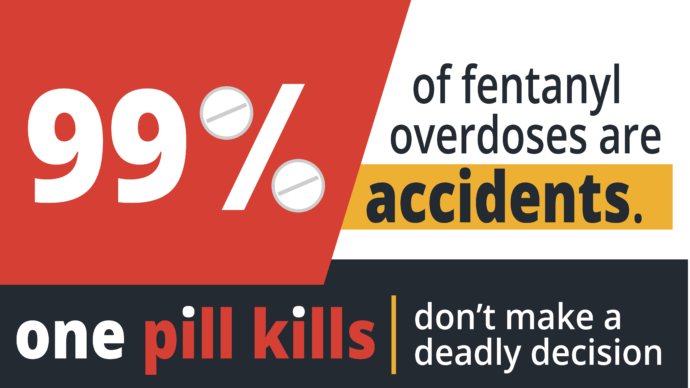 By Michael Leach
By Michael Leach
November 2nd, 2022
BURLINGTON, ON
Canada’s overdose crisis is fueled by fentanyl. It worsened during the pandemic and continues to create a wave of post-pandemic destruction.
The problem is directly connected to a toxic drug supply as fentanyl finds its way into Canada through illegal imports, local production within illegal labs, and the theft of medical fentanyl products.
Fentanyl is cheap for drug dealers to produce, yet they have no way of knowing how much fentanyl ends up in each illegally produced pill or powder.
 The pandemic and the lockdowns were the cause for the increased toxic drug supply as it impacted regular supply routes, and addicts were left using whatever they could find. “There was a significant increase in the number of people needing help over the pandemic,” said Marcel Gemme of drugrehab.ca. “Drug rehab providers were struggling to keep up with the increased demand, and overdoses were killing people before they could get help.”
The pandemic and the lockdowns were the cause for the increased toxic drug supply as it impacted regular supply routes, and addicts were left using whatever they could find. “There was a significant increase in the number of people needing help over the pandemic,” said Marcel Gemme of drugrehab.ca. “Drug rehab providers were struggling to keep up with the increased demand, and overdoses were killing people before they could get help.”
Unfortunately, drug dealers add fentanyl to other illicit drugs to maximize profits, which is why drug overdose has spiked.
According to most law firms, finding a fentanyl drug dealer criminally responsible for an overdose death is complicated. Yet, it has occurred where drug dealers have been found guilty of criminal negligence, causing death.
Most fentanyl drug dealers in Canadian cities are not large-scale drug traffickers. Many of these individuals are addicts, suffer from mental health issues, and sell drugs to fuel an addiction. It can also be challenging to trace the sources of drugs to which one caused the overdose.
Finally, punishing people who lack criminal intent or mens rea (guilty mind) is not always appropriate, which refers to the mental state that must generally accompany a prohibited act before it can legally be considered a crime.
The primary reason why charges are not always pursued is the difficulty of making a charge of manslaughter stick and getting a conviction. Yet, it has happened; in 2021, for the first time in London, ON, a fentanyl dealer was charged with manslaughter.
Police are constantly exploring new strategic ways to achieve stricter sentences for the people selling deadly drugs, but the results are mixed. The complexity of cases makes it difficult to prosecute drug dealers.

Opioid overdose deaths continue to increase.
The fentanyl crisis continues to be a tidal wave of destruction across the country. Health Canada says street drugs have become tainted with potent opioids like fentanyl. Fake pills are being produced using unknown amounts of fentanyl, and some drugs become contaminated with fentanyl unknowingly.
Moreover, prescription opioids also contribute to this crisis, as high rates of opioid prescribing mean more people are exposed to a drug that creates a dangerous physical dependence.
In 2018, almost one in eight people were prescribed opioids, and as of 2020, prescription opioid pain medication is used by 11.8% of the population, which has remained unchanged for some time. Opioid overdose deaths continue to increase.
During the first two years of the pandemic, there was a 91% increase in opioid-related toxicity deaths. Between January 2016 and March 2022, 30,843 opioid overdose deaths occurred.
Early intervention and drug rehabilitation remain the best options to help people. This includes more access to substance use treatment and programs designed to treat opioid addiction. In addition, long-term aftercare support helps people maintain sobriety and learn to live a life without drugs.
 Michael Leach has spent most of his career as a healthcare professional specializing in Substance Use Disorder and addiction recovery. He is a Certified Clinical Medical Assistant, and contributor to the healthcare website Recovery Begins.
Michael Leach has spent most of his career as a healthcare professional specializing in Substance Use Disorder and addiction recovery. He is a Certified Clinical Medical Assistant, and contributor to the healthcare website Recovery Begins.














